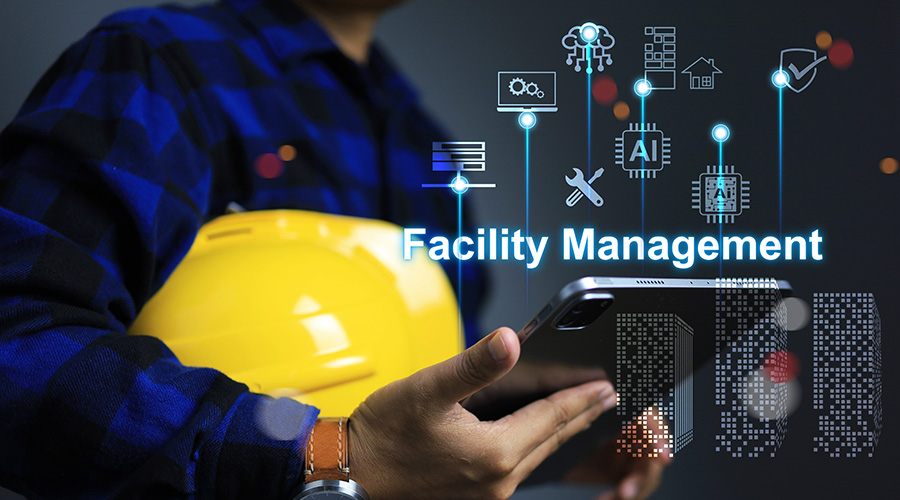Managers Discuss Emergency Preparedness, Disaster Planning
By Chris Matt, Managing Editor - Print & E-Media
OTHER PARTS OF THIS ARTICLEPt. 1: This Page
*Cathy Anthofer, director of campus safety and security, Earlham College, Richmond, Ind.
*Jeffery C. Camplin, president, Camplin Environmental Services, Inc., Rosemont, Ill. (Safety/emergency management consultant)
*Sean P.D. Nelson, assistant director, facilities engineering, Johns Hopkins Outpatient Center, Baltimore
Reactive maintenance remains all too common in institutional and commercial facilities, due to budget cuts, shrinking staffs, and expanding duties for maintenance and engineering managers. But one task that truly demands a proactive approach is emergency-preparedness planning. Three facilities experts explain the reasons for taking action before an emergency strikes.
What are the most important components of an emergency-preparedness plan related to maintenance and engineering departments?
ANTHOFER: First, (managers) need to focus on what I would call scene stabilization. They need to work with local responders to stabilize the scene so it's safe for entry of rescue (personnel) providing first aid and those kinds of things. That means that the HVAC (technician) needs to shut things down, and the electrician needs to be involved to shut the electrical grid down. Second is life safety. Is there training that they have received that is system specific to life safety and can aid those first responders? Third is protection of property. What do they need to do in a brownout situation?
CAMPLIN: A lot of the components that fall on them — whether they participate in the process of putting the plan together or not — deal with maintaining the life-safety functions of a structure or dealing with emergency-shutdown procedures. You certainly would want to be prepared to maintain the various systems in the building. I just did some expert-witness testimony on a case where a contractor was injured during a fire evacuation. The building-management firm was being sued by this individual because the plan was not implemented as designed. Mostly, the communications systems failed. They also had things like smoke-proof towers that weren't as smoke-proof as designed, and some of the fire-alarm systems didn't work necessarily the way they needed to.
NELSON: Understand and define their critical systems and personnel needed in order to keep the facility operational and safe to recover from a disaster. Simply put, assess the situation and protect your employees, customers, visitors, equipment, vital records or any other assets.
What is the role of maintenance and engineering managers and staff in compiling the plan?
CAMPLIN: The big thing is understanding the potential disasters that would affect their particular department. What I typically tell clients is, take a really rainy day, turn off all the lights, and think of all the terrible things that could happen to your building. You evaluate how those potential disasters will impact your systems. Are you prepared for it?
NELSON: It's preparing the support documents about the facility. Emergency-call lists and building and site maps are very important. (You need to identify the location of) your utility shutoffs, water hydrants, water mains, water-line locations, gas lines, gas mains, electrical cutoffs, (and) electrical sub-stations, as well as storm drains and sewer lines in every building you have. If you have different facilities or different locations — some off-site stuff — you want current copies of your floor plans readily accessible. Your alarms, annunciators, fire extinguishers, and fire-suppression systems are very important. What are you restricted areas? Where are your hazardous materials and high-value items? Here in a medical facility, our pharmacies are one of those high-value or lockdown areas you want to protect.
ANTHOFER: I think in compiling a plan, the managers need to identify who the critical staff are that need to be on scene for that scene stabilization, life safety, and preservation of property. Once those critical staff have been identified, (managers) really need to be invited to be on board with the emergency planning.
How important is it for organizations to practice and revisit their emergency-preparedness plans?
ANTHOFER: It's incredibly important to have a consistent schedule for revisiting your plan and drilling or exercising your plan. It builds familiarity with the plan. It helps you work out things in the plan that don't work. It also addresses any changing conditions in your institution — new staff, new equipment, new facilities, and new environmental characteristics in your area.
NELSON: It's probably one of the most important but least exercised practices today. Anyone can put a plan on paper, but my question is, "Can you prove that your plan actually works?" Practicing a plan ahead of time brings very important issues or questions to the surface. During a disaster is the last time you want to find out that you have a lot of holes in your plan.
CAMPLIN: Training and actual practice or mock-type events are very important. You can do simple things like tabletop exercises, where you get different departments around and do the exercise that way. I would also encourage not only doing it internally but pairing up with external agencies and resources, as well.
What type of education needs to take place for building occupants to ensure an effective execution of the plan?
NELSON: Your organization, really depending on the size, should identify the appropriate amount of trainers necessary to reach out to all building occupants. It's important to make sure that everyone understands what his or her role is in the event of a disaster. This training should be completed each year, (or) sooner, depending on staff turnover or major changes to the physical structure of your facility.
CAMPLIN: Most institutions have some type of fire-safety plan where you have a fire marshal or a fire warden on an existing floor. Those roles can be used for a variety of other type of emergency situations. Having (occupants) understand the chain of command is probably the biggest issue.
ANTHOFER: With a fire drill, you have that evacuation plan on the back of your door in your office. When the fire alarm is sounding, there's an expectation that you leave. When that fire alarm sounds and you leave, is there someone that walks through and follows up? Is there someone outside following those that come out of the building where they're congregating? A drill or an exercise is not merely pulling an alarm. It's pulling an alarm and then having a team to really observe and evaluate how that exercise went and what can be done for a more efficient evacuation — going back and talking to the individuals after they've evacuated.
What role does a strong relationship with vendors play during an emergency?
NELSON: If you're trying to come up with a continuity plan, (a strong relationship with vendors is) extremely critical, and it needs to be (built) right now.
ANTHOFER: The relationship with vendors should be built prior to the emergency. The questions that should be asked: What can the vendor provide in the midst of an emergency? How can a vendor provide those services or those materials or that equipment, despite the fact that the emergency may impact their business, as well?
CAMPLIN: Having relationships with vendors or anyone in your extended supply chain is very important. In the crisis situation, everyone is going to be fighting for supplies and other kinds of resources.
What are cost considerations related to emergency-preparedness planning?
CAMPLIN: Cost will be an important determining factor. What we try to recommend to organizations, either within the department itself or the entire organization, is to really sit down and look at brainstorming all the horrible things that could happen, and start a risk-management assessment. Once you understand what the risks are, then you can start doing your cost justification for some of the preparedness that's going to be involved. Unfortunately, emergency preparedness — beyond just writing a plan and letting it collect dust on the shelf — is very resource-intensive. Most of the time, people don't do the emergency planning until they get burned the first time. Then, there's that fresh vision in their head, and they're willing to put more resources toward it. It's a very tough sell, but there are plenty of horror stories already out there.
ANTHOFER: What is most difficult with any kind of budgeting for emergencies is, many times it's not included in your general budget. Instead, it's included in a rainy-day fund or a "we cross our fingers and hope this doesn't happen" fund. Budgeting for emergencies needs to be included in your general budget, as line items in that general budget. They need to address all four phases of emergency planning or management. The first phase is mitigation. The second phase is preparedness. Then there's the response. The last thing is the recovery phase.
NELSON: You need to consider a significant spike in labor. That is going to be your driving force in getting any disaster abated. Vendor premiums, portable-equipment rental, and repair and recovery to the facility are some of the real front-line costs that you're going to need to expect. Do you know what your business generates on a daily or weekly basis? How much revenue would you lose by not being able to do business? That's a good piece of information to take to your leadership to help them understand how you need to purchase portable equipment ahead of time or plan for any kind of a financial disaster.
Related Topics:











